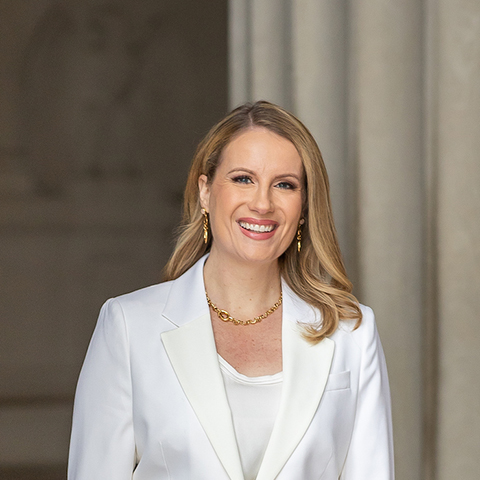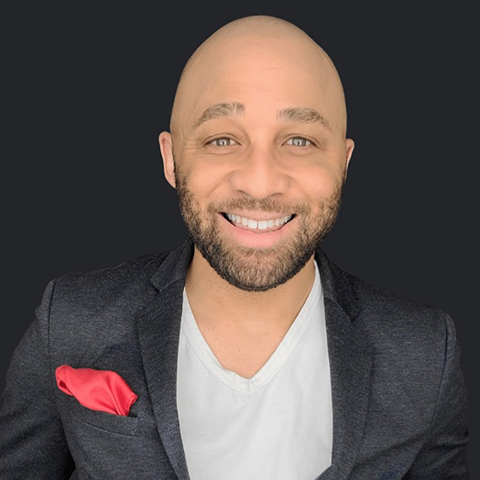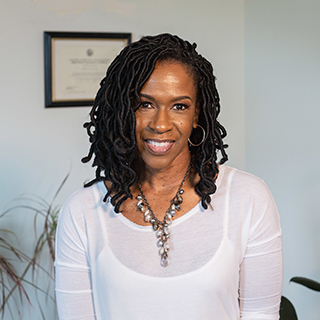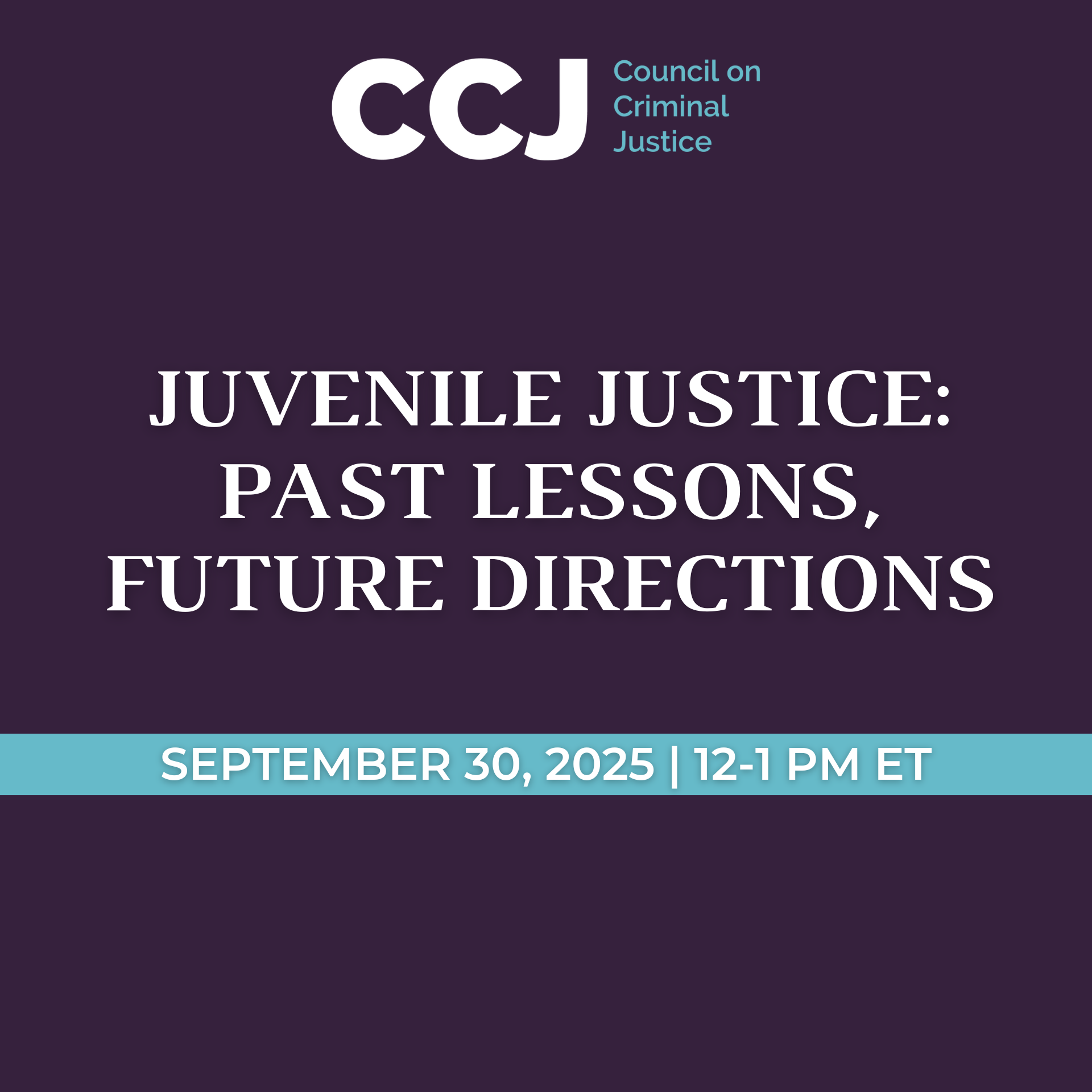On April 22, 2025, leaders of the Council on Criminal Justice Centering Justice initiative—Khalil Cumberbatch and Marc Levin—led a panel of experts in a discussion about second chance policies, which aim to offer individuals involved in the criminal justice system an opportunity to rebuild their lives and contribute to society. Topics included public perception, relapses, accountability, parole, and prevention. The panel featured Heather Rice-Minus, president and CEO of the Prison Fellowship; Louis L. Reed, social entrepreneur and film producer; and Lisa Daniels, founder and executive director at the Darren B. Easterling Center for Restorative Practices.
Highlights from the Conversation
On Balancing Evidence with Human Stories and Lived Experiences When Designing Reentry Programs
- LISA DANIELS: “You can’t separate [data and lived experiences]. Data tells us what’s happening, and lived experience tells us why it’s happening. And if you’re writing policy for people without including those people that it’s meant to serve, then you’re designing programs from a distance. You’re designing the processes that are supposed to support them from a distance. And distance can often lead to harm. And so lived experience actually brings a nuance that data cannot hold. It helps us to understand what safety and success on support actually look like from the inside. And that’s not anecdotal. It’s evidence with context.”
- LOUIS L. REED: “When I think about what holding means, it means to be able to have a degree of understanding of someone, of their experiences, of their biopsychosocial assessment … If someone has nine arrests, that’s not proof that they’re beyond help. In my mind, it’s proof that the system has failed nine times to be able to intervene with anything but punishment. And that’s not a rap sheet. It’s similar to what Lisa said. It’s a roadmap of missed policy opportunities. And so when I think about even recidivism, number one, how are we measuring recidivism? In my mind, recidivism doesn’t measure a morality. I think that it measures policy failures … If folks come home to no housing, no job access, no mental health care, and more than 40,000 legal barriers and/or social consequences to one criminal conviction, what are they really re-entering into?”
On the Role of Faith or Spiritual Leaders in Supporting Individuals and Systems During Reentry
- Heather Rice-Minus: “I’m so glad I serve a God that doesn’t keep track of all of my sins and doesn’t stop at two but offers me multiple chances to accept His grace. And so, when I think about allowing people the opportunity to rehabilitate and to serve their debt and to come back and have a second chance, it’s really not just a second chance that we should offer. We should offer a proportional penalty for the crime that’s committed. But then, every time we send someone back, to Louis’s point, we have to set them up for success. And that actually starts far before we send them home, right? It should start at the moment that they’re entering the system. And that’s where I think we miss some opportunities.”
“Prison culture as well as the culture outside, the programs that we have, I think we focus so much on just the program. The reality is if the prison culture itself and the culture we send people back to isn’t conducive to them living out that second chance, we’re setting people up for failure. And so that means we have to be talking to our communities, to our churches, to our policy makers, our prison officials about building a positive and healthy culture. And that prison program is only as good as the culture it sits in.”
On the Impact of the Trump Administration in Supporting Second Chance Opportunities
- HR-M: “In the first term for President Trump, not only were there multiple second chance month proclamations that he made, but we also passed the First Step Act, which was historic bipartisan legislation that’s impacted the federal system. And as a result, we’ve seen people come home, we’ve seen people become successful and contribute to their communities. And so, as we look at this second term, it is yet to be seen. But there is a through line there in terms of Alice Marie Johnson. I’m super excited that he has appointed her as pardon czar. I think Alice is just a shining example of what Lisa and Lewis spoke about, which is the importance of allowing people with direct experience to speak into what policies need to be implemented and so excited for her appointment. The new BOP director is someone who we have had the pleasure of working with at Prison Fellowship. We’ve worked with every administration over the years with Congress at the state level. And so, our role at Prison Fellowship is to remain hopeful and to press forward and to push for additional reforms, including making sure that the First Step Act is implemented and that the Federal Prison Oversight Act is implemented as well, because there’s been a number of problems with the [BOP] over the years.”
- LR: “I think that Trump signing the second chance month proclamation in 2018—it was symbolic, but I also think it was strategic. It was a signal that redemption doesn’t belong to one party. One of the things I always say is that Republicans at their best believe in liberty, Democrats at their best believe in justice, and all of us as Americans at our best should believe in liberty and justice for all—for all people, not just some people. That was a door that we needed open. … When it comes to solutions, what will I like to personally see from this administration? I think that we need a federal reentry infrastructure bill. I think that we got highways for commerce, why not for people coming home? We need to build reentry roadways so that people have that springboard to success that Heather was talking about. Next, I think that we also need performance-based contracts for the BOP. Look, if you want to run prisons in this country, your funding should rise or fall based on how many people you set free, not by how many people you can keep locked up. Finally, I think that we need to be able to automate the clemency review process for long-term sentences. Don’t get me started even on Clean Slate Act legislation on a federal level that in effect should expunge people’s record after they have been home with no intervening arrest or convictions. Because the pardon process, whether we realize it or not, restores your rights, but it doesn’t necessarily give you a clean slate and suppress your criminal history.”
On Individual Versus System Responsibility
- LD: “Going back to the question asked early on in the intro, ‘how many times or how many opportunities should someone have to re-enter society?’ […] The fact of the matter is that there is no number of times. This question itself partially presumes that prison teaches or positively changes people so that they should be expected to do well when they come out, and if they don’t then that’s on them … prison damages people. And so every time somebody goes in, the chances for them thriving are actually reduced by the harm that they’ve experienced while they are in prison. And although there are people that do well and are successful upon return, they have done so not because of their prison experience, but despite their prison experience. And so we should probably be asking a question, how many times can a state incarcerate someone before they, the state, actually have to acknowledge that incarceration isn’t working, and that there needs to be something different done? And I also think that part of that question that gets to whether people are deserving of an opportunity misses the qualitative pieces about whether or not they’re engaged in healing, in accountability, in harm repair, and, most importantly and most impactful, in community. And those are the things that happen during or in between that one-year point, that five-year point, or the 20-year point where they could possibly return to incarceration. But whenever they do the work, whether they participate in the work, that segment is significant for them. And people who do those things, in my opinion, deserve to be among us without question.”
- HR-M: “I think it’s certainly a balance. When someone commits a crime, it tears at the fabric of society. And crime demands consequences. We have to have people be held accountable. But at the same time, when we only say that that person themselves needs to pull themselves up by their bootstraps, we’re basically setting everybody up for failure. And so, we have to not only hold systems accountable, but again, I would go back to the point of culture. It’s not only the prison system that we need to hold accountable. We also need to think about our communities, our churches being places of welcome for people. There’s a lot of stigma people face if you have a criminal record. We talked at my church on ‘Second Chance Sunday’ just a couple of weeks back about how it can be a scarlet letter for F for felon. And so how do we as a church welcome people home in a way that says, you know, ‘you belong and we’re going to support you in this?’ And so, I think we not only need to look at government systems, but we need to look at communities, families, cultures.”
- LR: “I did 14 years in federal prison. I’ve been home approximately 10 years now … And just relatively recently, when I was introduced to give a keynote speech for a relatively large crowd, someone introduced me as a returning citizen. And one of the things that I shared in my opening remarks is, how long do I have to be home before I’m not a returning citizen? When after I’ve been locked up am I not locked out of opportunity? When is it that I am going to be able to, in effect, be able to retain my own personhood? To Heather’s point, people have this scarlet letter on their chest, which in effect means F. And I think that too often folks get a reentry program that lasts 30 days, but they have a stigma that lasts for 30 years. And what we don’t do is we don’t give longitudinal support … Reentry is not a solo mission. And until systems start showing up with the same energy that we expect from people who have been directly impacted by the legal system, from people who have been incarcerated, from people who’ve never been incarcerated, they’ve never been locked up, but they’re still locked out of those 46,000 social sanctions of a felony conviction. We’re not building pathways. We’re actually laying traps and calling in programs. Last but not least, I’ll also mention this as well. We tell people to get up, to stay clean, to find housing, to pay court fines, support your kids, and do it all while being tracked, while they are being tested, and while they’re being blocked at every term. Meanwhile, the system, it gets to go—it gets to continue to underperform with impunity. I’ve been wanting to say that word all day long, impunity. I’m going to say it one more time. It gets to underperform with impunity. And so if a parole officer drops the ball, if housing isn’t available, if treatment wait lists are six months long, who’s held accountable for that? We’re putting the onus on the individual, and rightly so. I think that there’s a degree of responsibility that people have to show up as the better version of themselves. But I think that the accountability should be placed on systems that should be designed in order to be able to support these individuals.”
On the Role that Prosecutors, Victims, Formerly Incarcerated Individuals, and Community Members Play in Shaping and Implementing Reentry Policy
- LD: “Those who are directly impacted by the justice system should be the ones leading the conversation. And that means that formerly incarcerated people and survivors must be centered in this conversation and not just consulted … Prosecutors also have a role to play, but they should not be the sole decision makers. Their power needs to be balanced by those who’ve been harmed and those who’ve been held accountable so that the reentry policy reflects the full picture of what healing and safety actually require. And then we have the community and community members are often viewed as bystanders in this work, but they’re actually the terrain where real reentry actually happens. Their trust, their support systems, and their willingness to welcome people home and to support them in their reentry process is what determines whether or not reentry actually succeed … if we want policies that actually work, then they need to be shaped by all of us, but especially those with lived experience of who have lived the cost of actually getting it wrong. Those are the people that we need to hear from.”
On the Possibility and Hope for Future Reentry Policies
- HR-M: “First of all, [the] Safe for Supervision Act bipartisan bill, it’s got incredible support, and we’re hoping to see it be reintroduced this Congress. It promotes safety, stability, and success by modernizing federal supervision practices to the point some have made. You know, it’s important that those who are doing community supervision have a mindset of helping people succeed, not catching people, right? And so this bill would help do that at the federal level. I also think about the Federal Prison Oversight Act, a bill Prison Fellowship and so many others supported that did pass the finish line, was signed into law … And then backing up even further, we need to be holding our system accountable for the front end as well. In this conversation, I also think about the VICTIM Act, Violence Incident Clearance and Technology Investigative Act. We should be making sure that there are resources to victims of violent crimes, to families of homicide victims. And a lot of times, you know, people end up needing a second chance because they didn’t get a first chance, and they didn’t get the support that they needed at the front end.”
On Measuring Progress
- HR-M: “We focus so much on recidivism, and essentially recidivism is a failure rate. We don’t measure any other system by their failure rate. You wouldn’t choose the hospital you’re going to go to based on its death rate, right? And so we ought to be measuring more positive holistic things as well … And so [at Prison Fellowship] we’re trying to measure not only recidivism, which is the key thing people use, but we’re trying to think about what is a measure of success? And how do we keep accountable? Not just the individuals in the system, but the people working in the system.”
On the Impact of Incarceration and Reentry on Individuals, Families, and Communities
- LD: “I think that’s something that doesn’t get addressed enough … [As someone who grew] up with a parent who was incarcerated … there is a retraining of the brain, a retraining of the mind that happens during the incarceration experience, and it doesn’t happen just for the person who is actually incarcerated. It happens to the family members and community that loves them as well … During the reentry process, everyone should be supported, not just the person who was incarcerated, but the people that love that person as well.”
On the Inclusion and Exclusion of Certain Offenses or Individuals in Clean Slate and Second Chance Initiatives
- LR: “If we’re honest, I think that clean slate laws with carve outs are like offering second chances with conditions that exclude people who actually need it the most. And we’re clearing records for folks who are already halfway through the door, while those most impacted, like those who served decades, those who’ve transformed, they’re left carrying the full weight of their past forever. And I think that when I’m thinking about carve outs, I don’t think that redemption should be reserved for the easy cases. I think that if your second chance laws exclude the people who’ve done the hardest work to change, then it’s not reform, it’s reputation management, so to speak. When I think about carve outs for so-called more serious offenders versus non-serious offenders or violent offenders versus non-violent offenders … it dichotomizes, and you have to be able to center transformation, not just through charging types … I know how there are other people who walk away from the passage of legislation with smiles. And I know that there are other people who walk away from legislation being passed, such as Clean Slate, with frowns, because they know that they are going to continue to be left out. ‘Carve out’ is just a euphemism for saying we’re leaving these people out. We’re going to continue to lock these people out. And I don’t think that that’s how redemption operates … Grace doesn’t have an expiration. Grace doesn’t have a metric that it runs out on opportunity. If we’re going to say we’re going to give people a clean slate, then we need to give them a clean slate all across the board.”
On Rating Communities for Reentry
- HR-M: “It’s not just about the government actors, it’s not just about the individual who committed the crime, it’s also about, ‘how are we showing up for people?’ … What if we were also looking at and rating the affirmation that communities are giving to people coming home, rather than just looking at catching people, or just looking at the news that comes on, which is often so negative … A lot of times we focus just on the prison system, but the reality is our prison officials don’t decide how long someone’s going to come to prison, they don’t decide who comes to prison, they can only do the best they can once people get there. And so, at every end of the spectrum, including the community before and after, we need to be holding people accountable. And I really like this idea of extending measurement to the community.”
- LR: “I think that we need, in my mind, a community opportunity scoreboard. If you can look at a community and you can see five liquor stores and you can see vape lounges and all of these other things, why can’t we have mental health clinics? Why can’t we have reentry support clinics? I think that we should be measuring communities by access to housing, healthcare, education, jobs, and we also need to tie that into funding as well, not how many people are policed or prosecuted.”
On the Impact of Trauma on Incarcerated Individuals and Effective Approaches to Improving Emotional Wellbeing
- LR: “I just want to share an anecdotal story. It wasn’t until recently, probably about a year or so ago, that I stopped taking a shower in my boxers. And for those of you who have done any degree of prison time, you understand what it is that I’m saying. The reason why, and this is being home after 14 years and home approximately 10 years, right, that was still trauma, what I call the new PTSD—prison traumatic stress disorder. I can tell you probably at least two and a half times out of the week to date, I am having some type of dream and or a nightmare … because I’m always thinking about the trauma that I experienced when I was incarcerated. What I think that is most effective is that we have to have peer-led healing spaces. I think that we have to have therapy with cultural fluency. And I also think that we have to have programs that don’t perpetuate or pathologize people. But we don’t see their pain as a product of survival. I think that we need to see people for who they are, as complex, as sophisticated, as trauma-laden, as we quite possibly can be.”
- LD: “Many who find themselves in a position of having caused harm have actually experienced harm prior to their carceral experience … [The Darren B. Easterling Center for Restorative Practices] partnered with the University of Illinois at Chicago and Dr. Catherine Boca Negra, who is also a member of the Council here, and developed an entire 12-week program that focuses on helping individuals who served long-term prison sentences to first and foremost understand and then reclaim their identity post incarceration. It is not peer-led, but peer-occupied, if you will. Everyone in the group is someone who is formerly incarcerated and facilitators come with some sort of connection to the carceral experience … We needed to create a space for people to actually find themselves and understand what the next phase of their journey could look like.”
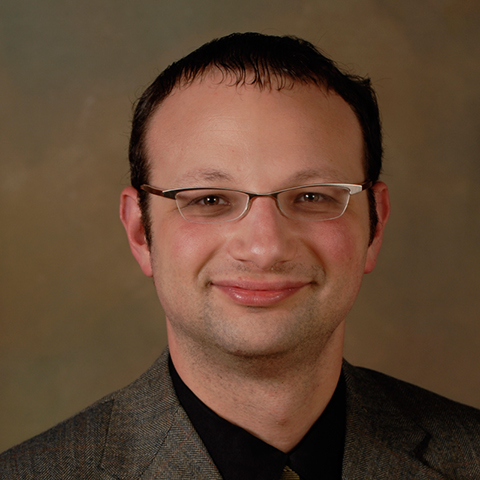
Marc Levin
“There’s a lot of complex questions that we confront in terms of second chances, including the reality that for many people, they’ve committed multiple offenses in the past. And so, we have to be realistic about that and make sure we’re balancing accountability and the opportunity for people to overcome their past. And of course, in terms of reentry, we know it’s not always a straight line. Sometimes people have a relapse, particularly with addiction, for example. And so, the question is, how can we keep things moving forward and recognize both individuals and systems fail sometimes?”
“I’m just reminded by this discussion that this area is not a zero-sum game. We can have accountability, and we can also help people succeed. We also really identified the fact that there’s a role for holding systems accountable and improving them and making sure people have access to more opportunities as well.”
“When we see the statistics about recidivism, re-arrest, obviously it’s all important, but some of it is technical violations, missing appointments, and things like that. Some of it’s also someone who might have been incarcerated for something quite serious, and now they’ve been re-arrested for a minor misdemeanor. And yes, it’s recidivism and they need to be held accountable, but it can obscure the fact that they may have made substantial progress. As we know, in terms of things like mental illness and substance use disorder, which often contribute to some of the challenges people have in the criminal justice system, it does take time and people can fall back and then make further progress.”

Khalil Cumberbatch
“There’s been progress reports published by not only the team here at the Council, but also by the Council of State Governments that say that nationally recidivism rates have come down… The reason for these reductions are not obviously crystal clear, and, as Marc alluded to, there is no straight line. But there are two basic possible explanations. One, either changes in behavior by those released or changes in the behavior of the criminal justice system… So, individual behavior change is definitely contributing, along with a clear trend toward the system revoking fewer people to prison for technical violations of supervision. Of course, more data and analysis are needed to demonstrate a fuller understanding of why recidivism rates have actually fallen.”
About the Centering Justice Initiative
The Centering Justice initiative is a collaborative project engaging a diverse range of the nation’s top thinkers and doers in an ongoing, ideologically vibrant conversation about criminal justice policy.
Additional Resources
To join the Centering Justice email list, please click here.

